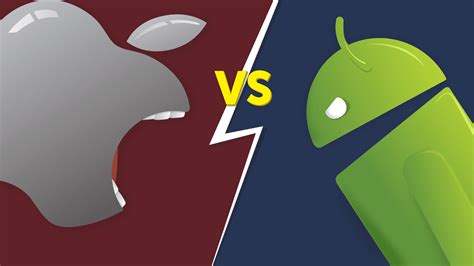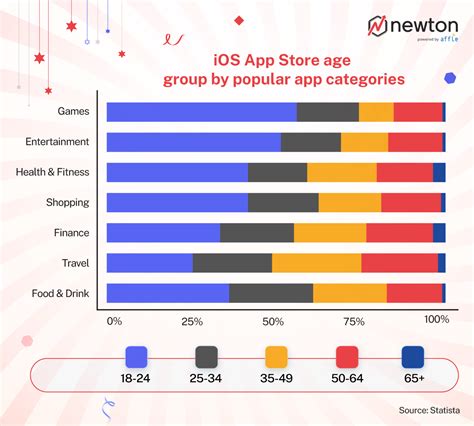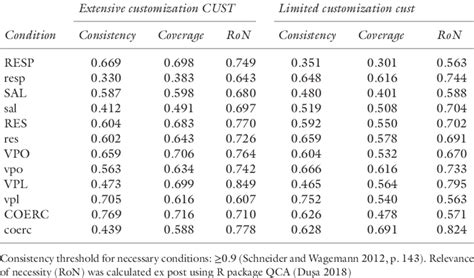As we dive into the marvelous realm of modern mobile technology, it becomes increasingly apparent that the market is predominantly dominated by two distinctive operating systems. A wave of innovation and unprecedented advancements has led to the emergence of Apple's iOS and Google's Android as the primary players vying for supremacy. These two giants have taken the smartphone industry by storm, gripping the imaginations of users worldwide.
Without a doubt, iOS and Android have become indisputably synonymous with supremacy and technological evolution. However, beneath the surface lies a vast array of dissimilarities and nuances, invisible but incredibly significant to tech enthusiasts and casual users alike. By taking a closer look at the features and functionalities that set these operating systems apart, we can gain a deeper understanding of the unique experiences they offer.
Let's embark on a voyage through the intricacies of iOS and Android, examining their distinctive qualities that shape the way we interact with our mobile devices. From the effortless user experiences offered by iOS to the unparalleled customization options showcased by Android, each operating system possesses its own distinct set of strengths. It is the interplay of these distinctive characteristics that truly makes choosing between an iPhone and an Android smartphone a fascinating conundrum.
Operating Systems: iOS vs Android

In the world of smartphones, the way our devices operate plays a pivotal role in our overall user experience. When it comes to operating systems, iOS and Android are the two major players dominating the market. Each operating system provides a unique set of features and functionalities, catering to the preferences and needs of different users. In this section, we will delve into the differences between iOS and Android, shedding light on their strengths and weaknesses.
Operating System Architecture:
iOS and Android have contrasting approaches in terms of their operating system architecture. iOS, developed by Apple, utilizes a closed system architecture. This means that Apple tightly controls and regulates the software and hardware integration in their devices. On the other hand, Android, developed by Google, adopts an open system architecture. This allows various manufacturers to customize the operating system according to their own specifications, resulting in a wider range of device options for users.
App Ecosystem:
Another prominent difference lies in the app ecosystem offered by iOS and Android. Apple's App Store provides a curated selection of applications, with strict guidelines and policies in place to ensure quality and security. In contrast, Android's Google Play Store offers a more open and flexible environment, allowing developers to publish apps with less stringent regulations. This leads to a larger quantity of apps available on Android devices, but also a higher risk of encountering malicious or low-quality applications.
User Interface:
iOS and Android diverge in terms of their user interface design. iOS focuses on simplicity and uniformity, featuring a consistent and intuitive interface across all Apple devices. Android, on the other hand, provides greater customization options, allowing users to tailor their device's interface to their liking. This flexibility, however, can lead to a more fragmented user experience, as different manufacturers may implement their own customized interfaces.
Integration and Ecosystem:
iOS boasts seamless integration with other Apple devices and services, creating a cohesive ecosystem that synchronizes data and applications effortlessly. This is particularly advantageous for users who own multiple Apple products. Android, on the other hand, offers a wider range of compatibility with third-party devices and platforms, allowing for more diverse integration options. This can be beneficial for users who prefer a more versatile and interconnected digital environment.
Security and Privacy:
When it comes to security and privacy, iOS has a reputation for being more secure, thanks to its closed system architecture and stringent app review process. Apple also implements various privacy-focused features and provides users with more granular control over their data. Android, although it has made significant strides in improving security over the years, still faces challenges due to its open system architecture and diverse hardware ecosystem. However, Android offers users greater flexibility in managing app permissions and customizing their privacy settings.
Conclusion:
In conclusion, iOS and Android differ in various aspects of their operating systems. iOS offers a tightly controlled and integrated experience, with an emphasis on simplicity and security. Android, on the other hand, provides a more open and customizable environment, catering to the preferences of users who prioritize flexibility and compatibility. Understanding these differences can help individuals choose the operating system that best aligns with their needs and preferences.
Design and Build: Sleekness vs Customization
When it comes to mobile devices, the design and build play a crucial role in attracting users. Both iPhone and Android smartphones offer unique approaches to design and build, each with its own advantages and trade-offs.
In terms of sleekness, iPhones are known for their premium and elegant design. With their sleek and slim profiles, iPhones have a minimalist aesthetic that appeals to those looking for a clean and refined look. The seamless integration of hardware and software gives iPhones a polished feel that exudes sophistication. On the other hand, Android smartphones offer a wide range of customization options. Users can choose from a variety of designs, materials, and finishes to personalize the look and feel of their Android devices. This level of customization allows users to express their individuality and make their smartphones truly unique.
| iPhone | Android |
|---|---|
| Sleek and slim profile | Customizable design |
| Premium and elegant aesthetic | Wide range of design options |
| Seamless hardware-software integration | Opportunity for personalization |
While iPhones prioritize sleekness and a consistent design language, Android smartphones embrace the idea of customization, allowing users to tailor their devices to their preferences. This distinction in design and build philosophy gives each platform its own distinct appeal, catering to different tastes and preferences in terms of aesthetics. Ultimately, the choice between sleekness and customization depends on personal preferences and priorities when it comes to smartphone design.
App Store vs Play Store: Exclusive vs Open Source

When it comes to smartphone platforms, one of the distinguishing factors is the app store offered by each operating system. In this section, we will explore the differences between the App Store and the Play Store, focusing on the concepts of exclusivity and open-source.
| App Store | Play Store |
|---|---|
| The App Store, designed for iOS devices, is known for its curated collection of applications. | The Play Store, designed for Android devices, takes a more open-source approach, allowing developers to publish their apps with ease. |
By maintaining strict guidelines and reviewing each app before it is made available for download, the App Store ensures a higher level of quality and security for its users. | On the other hand, the Play Store provides a broader range of apps due to its more relaxed approval process. This openness allows for greater innovation and diversity in the apps available. |
The App Store is also known for its exclusive apps and features, which can only be found on iOS devices. This exclusivity can be seen as a selling point for Apple enthusiasts. | Meanwhile, the Play Store offers a wider selection of apps and is more compatible with various Android devices, making it a popular choice for users looking for customization and flexibility. |
Overall, the choice between the App Store and the Play Store comes down to personal preferences. Whether you prefer the carefully curated selection and exclusive features of the App Store or the openness and versatility of the Play Store, both platforms provide a wealth of applications to enhance your smartphone experience.
Hardware: Integration vs Diversity
In the discussion comparing smartphones based on their operating systems, one prominent aspect to consider is the hardware they encompass. While both iPhone and Android smartphones exist on the market, they differentiate themselves in terms of hardware by emphasizing either integration or diversity.
Integration refers to the iPhone's implementation of a closed ecosystem, where the hardware and software are tightly integrated. Apple designs both the hardware and operating system, resulting in a seamless user experience. The iPhone offers a consistent and optimized performance due to its tight control over hardware components.
In contrast, Android smartphones focus on diversity in terms of hardware. Android, being an open-source operating system, is used by various manufacturers who produce smartphones with differing specifications and designs. This enables users to choose from a wide range of options, such as different screen sizes, camera capabilities, and processing power.
A significant advantage of iPhone's integrated hardware approach is its ability to optimize the user experience, resulting in smooth and responsive performance. Apple's control over both hardware and software ensures that updates and features are quickly implemented across all devices. Additionally, the closed ecosystem allows for tight security measures and a seamless integration with other Apple devices and services.
On the other hand, Android smartphones' hardware diversity provides users with more flexibility and choices to meet their specific needs and preferences. With a plethora of options available from various manufacturers, users can find devices that cater to their desired features, whether it be a high-resolution display, a specific camera setup, or expandable storage.
| Hardware: Integration | Hardware: Diversity |
|---|---|
| Apple designs both hardware and software | Manufacturers offer a variety of designs and specifications |
| Optimized performance and seamless user experience | Flexibility to choose devices based on specific needs |
| Tight integration with other Apple devices and services | Wide range of options for screen size, camera capabilities, etc. |
| Tight security measures within the closed ecosystem | More options for expandable storage and customization |
In conclusion, while iPhone emphasizes integration to provide a consistent and optimized experience, Android smartphones bring diversity to the table, allowing users to find devices tailored to their specific requirements. The choice between integration and diversity depends on individual preferences and needs, making both options valuable in their own right.
Customization Options: Limited vs Extensive

When it comes to personalizing and tailoring your smartphone experience, the degree of customization options offered by iPhone and Android devices significantly varies. While both platforms strive to provide users with the freedom to personalize their devices, there are notable distinctions in the extent to which they allow customization.
iPhone: Apple's iOS offers a more limited range of customization options compared to its Android counterpart. The emphasis is placed on simplicity and uniformity, providing users with a cohesive and intuitive user interface. While customization options like changing wallpapers, rearranging icons, and selecting different app layouts are available, the overall scope remains relatively restricted. This approach ensures that iPhone users have a consistent experience, but it may be less appealing to those seeking a more personalized touch.
Android: In contrast, Android platforms such as Samsung, Google, or other manufacturers running on the Android operating system, provide an extensive array of customization options. The Android ecosystem is designed to empower users to modify various aspects of their devices, from home screen layouts and widgets to system-wide themes and icon packs. This flexibility allows for a more personalized experience, enabling users to express their individuality and tailor their smartphones to their unique preferences.
In summary, while iPhone offers a streamlined and cohesive interface with relatively limited customization options, Android smartphones embrace a more expansive approach, presenting users with extensive freedom to tailor their devices to suit their personal tastes and style.
User Interface: Simplicity vs Versatility
In the realm of smartphone technology, there exists a fascinating juxtaposition in terms of user interface. On one hand, there is the allure of simplicity, where intuitive design and streamlined functionality reign supreme. On the other hand, there is the allure of versatility, where customization options and a plethora of features cater to individual preferences. This distinction is at the core of the user interface experience between iPhone and Android smartphones.
The user interface of an iPhone embodies simplicity. With its clean and minimalist design, navigating an iPhone feels effortless and straightforward. The interface prioritizes ease of use, presenting users with a seamless experience that requires minimal effort to understand and operate. This simplicity can be seen in its iconic grid of apps, uniform icons, and intuitive gestures. Users who value a streamlined and intuitive user experience gravitate towards the iPhone.
On the contrary, Android smartphones offer a user interface that embraces versatility. Android's open-source nature allows for a high level of customization and personalization. Users can not only rearrange their home screens, but also change app icons, install different launchers, and even modify system settings to suit their preferences. This versatility is appealing to individuals who desire an interface that can adapt and evolve according to their specific needs and tastes.
| iPhone | Android |
| The interface is clean and minimalist. | The interface allows for high customization. |
| Navigation is intuitive with minimal learning curve. | Learning the interface may require some time and effort. |
| Uniform icons and grid layout for apps. | Allows for rearranging home screens and changing app icons. |
| Gesture-based controls for seamless interaction. | Offers various gestures and navigation options. |
At the end of the day, the choice between simplicity and versatility boils down to personal preference. Some may find the straightforwardness of the iPhone's user interface to be a breath of fresh air, while others may appreciate the flexibility and customization options that Android smartphones offer. Whichever path one chooses, both iPhone and Android smartphones excel in their own unique ways, providing users with an interface that caters to their individual needs and preferences.
Security: Closed vs Open Source Vulnerabilities

In the ever-evolving world of smartphones, one essential aspect that makes a significant difference between iPhone and Android devices is their approach to security. While both operating systems strive to provide a secure environment for users, their strategies differ due to the contrasting nature of closed and open source systems.
When it comes to closed source systems like iPhone's iOS, security is primarily enforced through strict control over the software and hardware. Apple maintains a closed ecosystem where every aspect of the operating system is carefully developed and controlled by the company. This closed approach helps mitigate potential vulnerabilities, as Apple has complete oversight of the software, ensuring that only authorized and thoroughly tested apps make their way onto the App Store.
On the other hand, open source systems such as Android offer a more transparent and collaborative approach to security. The open nature allows developers worldwide to scrutinize the source code, uncover vulnerabilities, and contribute to enhancing the security of the operating system. This community-driven effort promotes continuous improvement and serves as a powerful defense against potential threats.
The closed source model employed by iPhone brings certain advantages in terms of security. As developers have limited access to iOS source code, it becomes difficult for malicious actors to exploit vulnerabilities in the operating system. Additionally, Apple rigorously reviews and approves each app before it becomes available on the App Store, reducing the chances of users inadvertently installing malware-infected applications.
Conversely, the open source model of Android makes it susceptible to a broad range of vulnerabilities. While the open collaboration enables speedy detection and patching of security flaws, it also presents the risk of malicious actors exploiting vulnerabilities before patches can be implemented across all devices. Furthermore, the availability of alternative app stores outside of the Google Play Store increases the likelihood of users downloading potentially harmful applications.
| Closed Source (iOS) | Open Source (Android) |
|---|---|
| Controlled environment | Transparent and collaborative approach |
| Less susceptible to exploits | Potential for timely vulnerability detection |
| Rigorous app review process | Increased risk from alternative app stores |
In conclusion, the contrasting security approaches of closed and open source systems present unique advantages and challenges for iPhone and Android smartphones. While the closed source model provides a tightly controlled environment, minimizing the risk of exploits, the open source model promotes transparency and collective effort in addressing security vulnerabilities. Ultimately, user preference and the level of trust in the manufacturer's security measures play a vital role in selecting a smartphone that aligns with an individual's security needs.
Pricing: Premium vs Budget Options
When considering the cost of owning a smartphone, one of the main factors to take into account is the pricing options available. Both iPhone and Android offer a range of choices when it comes to pricing, with the key distinction being between premium and budget options.
| Premium Options | Budget Options | |
|---|---|---|
| Operating System | iOS | Android |
| Design | Elegant and sleek | Varies, but often more basic |
| Materials | High-quality materials | Plastic or lower-grade materials |
| Specifications | Top-of-the-line specs | Basic to mid-range specs |
| Camera | Advanced camera technology | Standard camera capabilities |
| Storage | Higher storage options | Limited storage options |
| Price Range | Usually higher-priced | Generally more affordable |
| Availability | Limited to official Apple stores | Available through various retailers |
Premium options, such as iPhones, typically come with a higher price tag due to their advanced features, elegant design, and top-of-the-line specifications. These devices often utilize high-quality materials and offer larger storage options. Additionally, they may showcase cutting-edge camera technology, ensuring superior photo and video capabilities.
On the other hand, budget options running on the Android operating system provide more affordable alternatives for users. Although they may not offer the same level of design sophistication or premium materials, they still provide a range of functional features. These devices have more limited storage options and may not have the same level of camera capabilities as their premium counterparts.
While premium options like iPhones are typically only available through official Apple stores, budget options running on Android can be found through various retailers, offering more flexibility in terms of purchasing options.
In conclusion, the choice between premium and budget options ultimately comes down to individual preferences, priorities, and budget constraints. Those seeking top-of-the-line features and design may opt for the premium iPhone experience, while those looking for affordability and flexibility may find value in budget Android smartphones.
Ecosystem: Seamless Integration vs Compatibility

When considering smartphones, one crucial aspect to explore is the overall ecosystem provided by the operating system. Each platform offers a unique approach to integrating their devices with other products and services, shaping user experiences and compatibility.
| iPhones | Android Smartphones |
|---|---|
| iPhones are renowned for their seamless integration within Apple's ecosystem. | Android smartphones, on the other hand, prioritize compatibility with a wide range of devices and services. |
| This seamless integration empowers users to effortlessly connect their iPhones with various Apple products, such as Macs, iPads, and Apple Watches. | While Android smartphones offer compatibility with many devices, they do not provide the same level of deep integration as iPhones within a specific ecosystem. |
| Apple's ecosystem allows for features like Universal Clipboard, Handoff, and Continuity, which enable smooth workflows across multiple devices. | Android smartphones, on the other hand, prioritize open compatibility, allowing users to connect their devices with a broader range of third-party products and services. |
| The tight integration also extends to software updates, with iPhones receiving prompt updates for both the operating system and applications, ensuring a consistent and secure user experience. | While Android smartphones receive regular updates as well, the distribution depends on device manufacturers and carriers, resulting in a fragmented user experience regarding the latest features and security patches. |
In summary, iPhones offer a seamless integration within Apple's ecosystem, enabling effortless connectivity with various devices, while Android smartphones prioritize compatibility with a wider array of third-party products and services, allowing for more extensive customization options.
Brand Loyalty: Apple vs Other Android Manufacturers
When it comes to the mobile industry, one aspect that greatly influences consumers' choices is brand loyalty. This factor plays a significant role in determining whether a person prefers to stick with Apple devices or explore the wide variety of options offered by other Android manufacturers.
Apple's dedicated fan base is often hailed for their unwavering loyalty to the brand. They prioritize the seamless integration of Apple products, the exclusive features that come with owning an iPhone, and the overall ecosystem that Apple offers. On the other hand, other Android manufacturers strive to compete by providing users with an extensive range of devices that cater to various preferences and budget constraints.
Apple's brand loyalty can be attributed to several factors. First and foremost, there is a perception of superior quality and craftsmanship associated with Apple products. The sleek design, premium materials, and attention to detail create a sense of luxury and prestige. Additionally, Apple's closed ecosystem and emphasis on user privacy and security contribute to the loyalty of its customers.
Contrasting Apple's brand loyalty, other Android manufacturers have their own unique selling points. They often offer a wider selection of devices, giving consumers the freedom to choose based on factors such as price, screen size, camera capabilities, and other specifications. Some manufacturers also focus on customization options, providing users with a more personalized experience.
While Apple's brand loyalty is stronger, other Android manufacturers constantly attract new customers by offering innovative features and improvements with each new device release. These manufacturers thrive on the diversity and flexibility of the Android operating system, giving users the ability to customize their devices to suit their needs and preferences.
Overall, brand loyalty plays a crucial role in the ongoing competition between Apple and other Android manufacturers. Apple's devoted fan base values the integration and exclusivity of the iPhone, whereas other Android manufacturers strive to entice users with a broader range of devices and customization options. Both approaches provide unique advantages, ultimately allowing consumers to make informed choices based on their individual preferences and priorities.
FAQ
What are the key differences between iPhone and Android smartphones?
There are several key differences between iPhone and Android smartphones. One major difference is the operating system. iPhones use iOS, while Android smartphones use the Android operating system. Another difference is the App Store. iPhones have the Apple App Store, while Android smartphones have the Google Play Store. Additionally, the design and user interface of the two types of smartphones differ. iPhones often have a sleek and minimalistic design, while Android smartphones come in various designs and offer more customization options. Finally, the price range is another notable difference, with iPhones generally being more expensive than Android smartphones.
Are there any differences in terms of apps and app stores between iPhone and Android smartphones?
Yes, there are differences in terms of apps and app stores between iPhone and Android smartphones. iPhones have the Apple App Store, where users can download apps specifically designed for iOS. Android smartphones, on the other hand, have the Google Play Store, which offers a wide range of apps compatible with the Android operating system. While many apps are available on both platforms, there are also exclusive apps for each operating system. This means that some apps may be available only on iPhones, while others may be exclusive to Android smartphones.
What are the advantages of an iPhone over an Android smartphone?
There are several advantages of an iPhone over an Android smartphone. One advantage is the integration and ecosystem. iPhones seamlessly integrate with other Apple devices and services, such as Mac computers, iPads, and iCloud. This allows for a more unified user experience across multiple devices. Another advantage is the software updates. Apple tends to provide software updates for a longer period compared to most Android smartphone manufacturers, ensuring that users have access to the latest features and security updates. Additionally, iPhones are known for their high-quality build and design, as well as the quality of their cameras.
Are there any advantages of Android smartphones over iPhones?
Yes, there are advantages of Android smartphones over iPhones. One advantage is the variety of choices. Android smartphones come in various models and designs from different manufacturers, offering a wide range of options to suit different preferences and budgets. Another advantage is the customization options. Android smartphones allow users to personalize their device's appearance and functionality to a greater extent compared to iPhones. Additionally, Android smartphones often offer more flexibility in terms of file management and compatibility with third-party apps and services.




